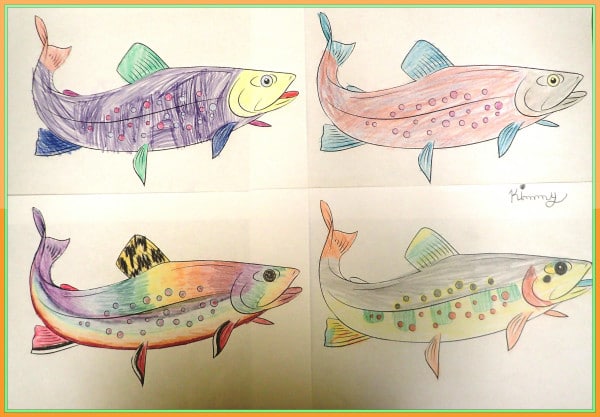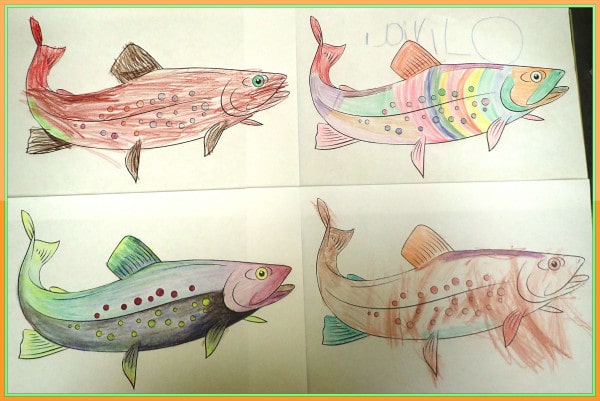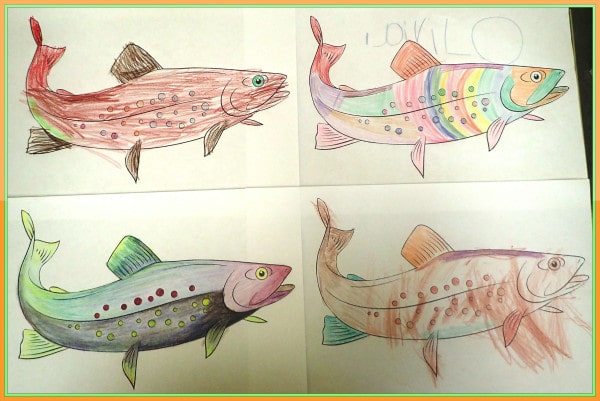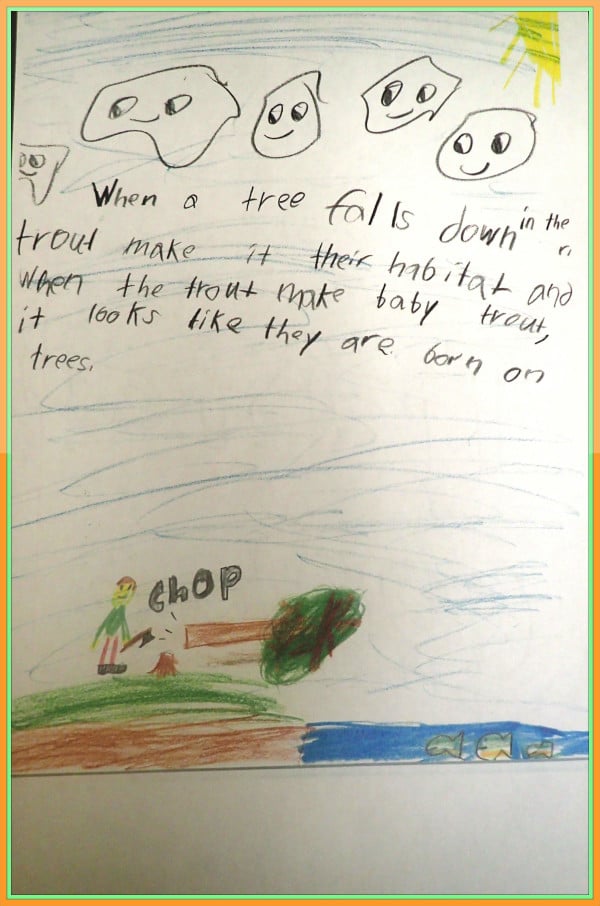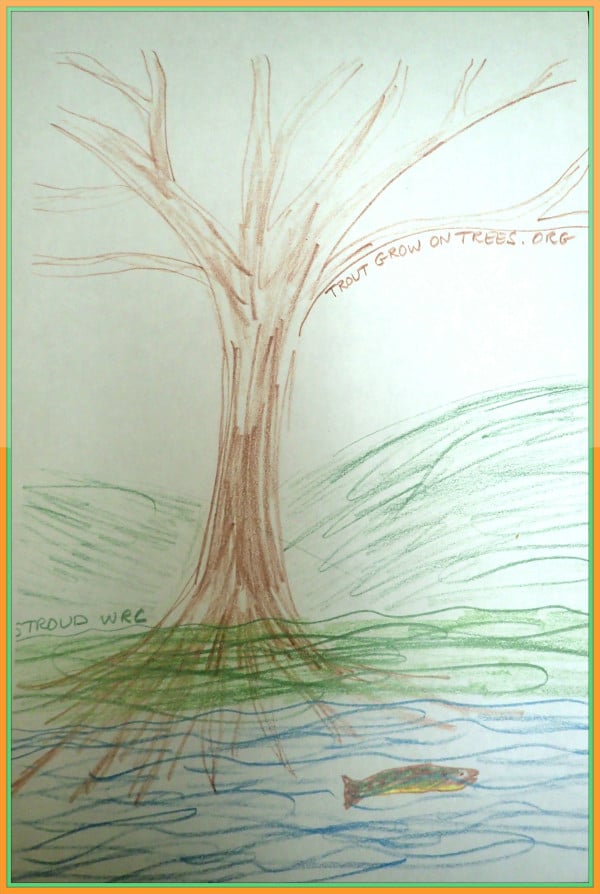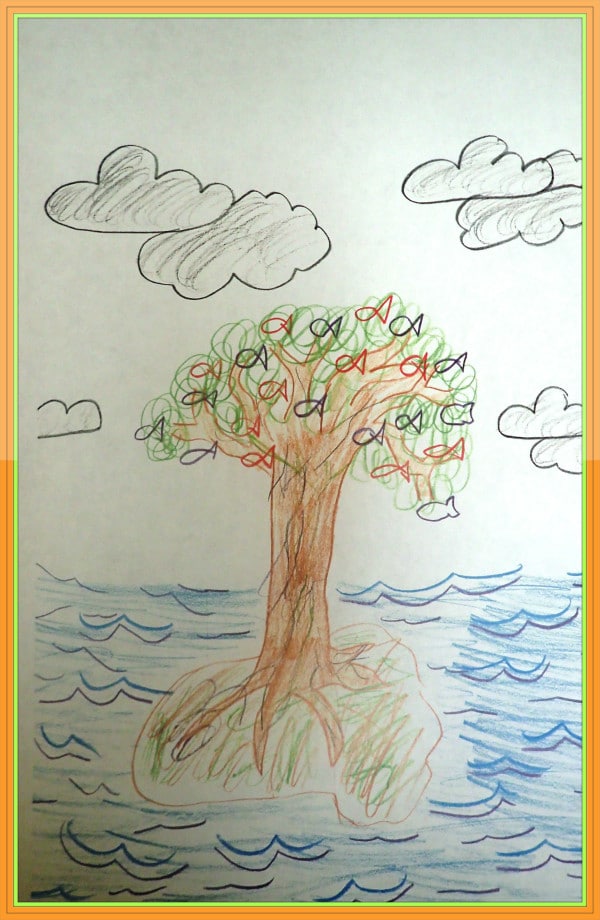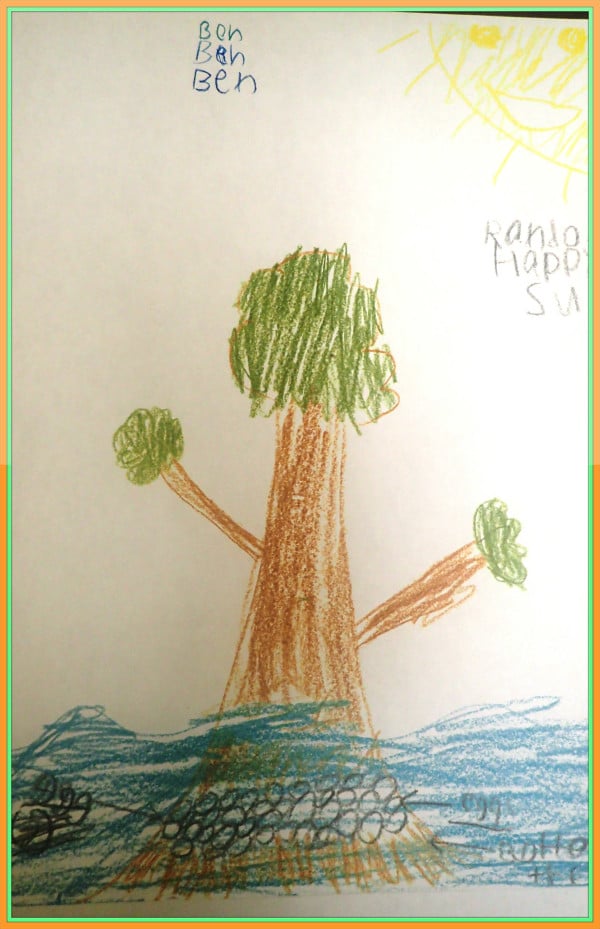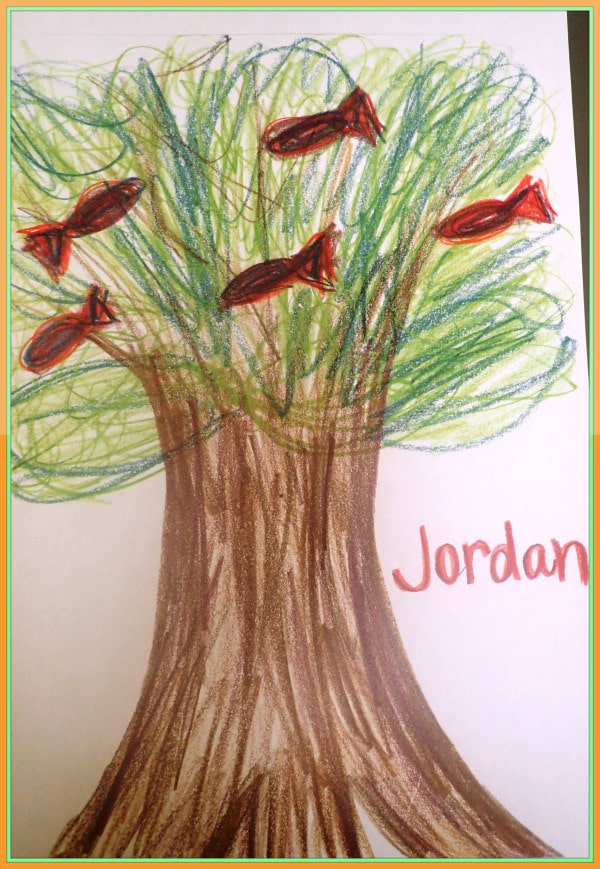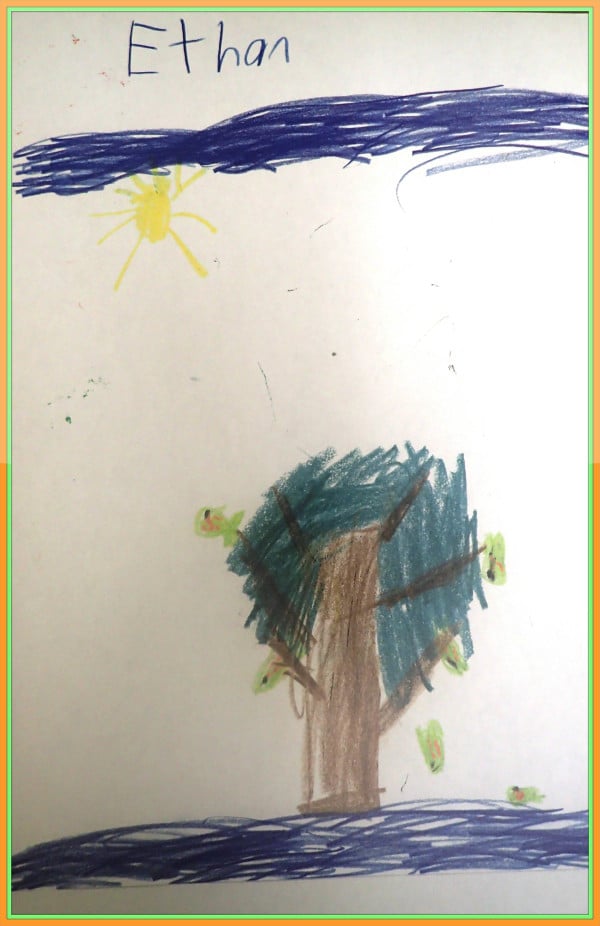Trout Grow on Trees
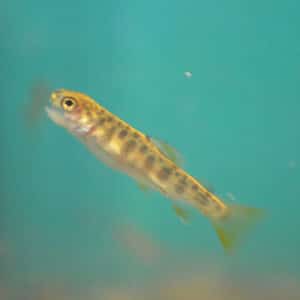
Trout Grow on Trees® (TGOT) is an integrated set of activities designed to educate children of all ages on the important interconnections of healthy forests, healthy streams, and healthy trout populations. The activities were conceived in 2013 by Bernard Sweeney, Ph.D., of Stroud Water Research Center.
TGOT activities complement ongoing Trout in the Classroom programs, tree planting activities, macroinvertebrate monitoring, or they can stand alone. Please contact our education department with questions or to share your experiences with Trout Grow on Trees activities!
Activity Overview
- Grade level: 4-12
- Subject areas: life science, environmental education.
- Duration: preparation time, 10 minutes; activity time, 20 minutes.
- Group size: one group of 30 students.
- Setting/season: optimum time is during or at trout release day and when trees are leafed out. Indoors or outdoors.
- Key terms: stream health, trout, trees, riparian zone, nutrients, macroinvertebrates, food web, watershed tea.
- Skills: organizing, interpreting, identifying relationships, applying learned information, presenting.
To learn more about the activity objectives, materials, procedures, extensions and assessments, download the activity guide.
We asked children and their parents at a Trout Grow on Trees event to create their own trout designs — look how cool these are!
The Benefits of Streamside Forests
Brook trout once inhabited every cold water stream in the mid-Atlantic and northeast region of the U.S., but populations have dramatically declined during the past 200 years. The removal of streamside forests has greatly contributed to this decline and habitat loss for the brook trout. The restoration of streamside forests is a way to improve water and habitat quality of streams and a necessary prerequisite to help restore healthy trout populations.
Learn more about how streamside forests help restore and protect our watersheds »
Additional Resources
- Pennsylvania Trout in the Classroom
- Pennsylvania Council of Trout Unlimited
- Pennsylvania Fish and Boat Commission
- Habitat and the Brook Trout
- The importance of trees to streams
- Streamside reforestation
- Stroud Center’s Water Restoration group
- Stroud Center’s macroinvertebrate image gallery
- Stroud Center’s macroinvertebrate identification key
- Other Stroud Center macroinvertebrate resources
- The Leaf Pack Network®

